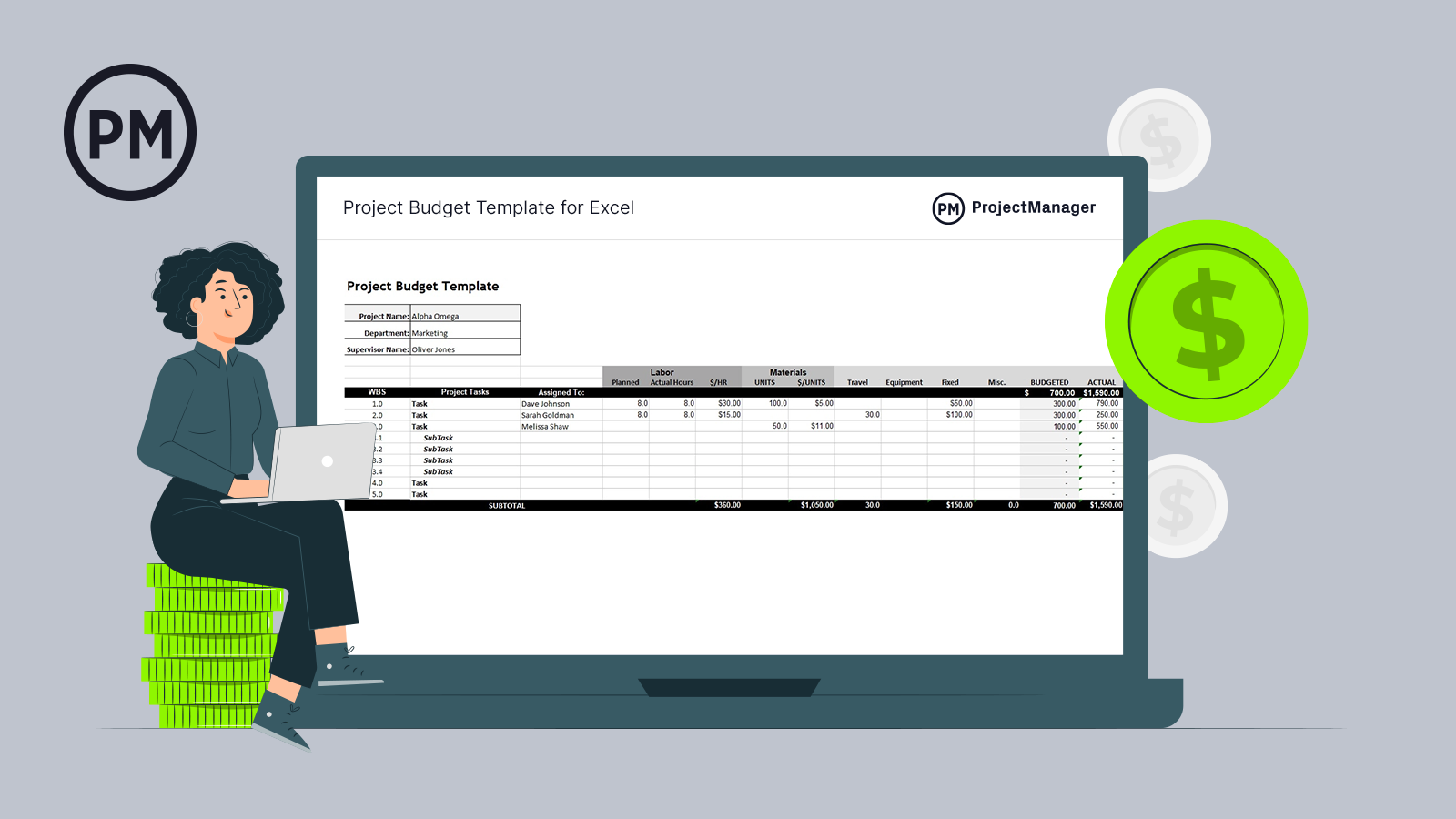Construction projects must be well orchestrated. There are many contractors working on various aspects of the overall project. Contractor management is a process to manage the contractors and make sure they’re doing what they need to do, when they need to do it and meeting quality standards.
What Is a Contractor?
In the most general sense of the word, a contractor is someone who has signed a contract that legally binds them to specific work, including labor and materials. A contractor is generally independent working as a freelancer in a sense for the property owner or general contractor.
Being able to manage outside contractors is facilitated by the use of project management software. ProjectManager is award-winning project management software that connects contractors with general contractors, property owners, architects, engineers and subcontractors all in real time. Our software has multiple project views so everyone can work on the tools that are most appropriate. They can then share files, comment at the task level and more, creating a virtual workplace that connects the office, the job site and anywhere else work is being done. Get started with ProjectManager today for free.

What Is Contractor Management?
Contractor management is a process used in projects where some or many of the workers are employed by contract as opposed to those who are salaried employees of a company. The goal of contractor management is to plan, manage and track the work of contractors to ensure that they’re meeting milestones in the schedule and keeping to the project budget while maintaining safe working conditions and delivering quality work.
Contractor Management Process
To fulfill the goals of contractor management, there are certain steps that must be followed. Here’s a list of the process for contractor management.
1. Use a Work Breakdown Structure to Identify Your Project Tasks
A work breakdown structure is a hierarchical tree chart in which the final deliverable is on top and all the deliverables that lead up to that branch are down below it. Once you’ve identified all the deliverables in your project, you can break those down into tasks.
2. Determine What Tasks Can’t Be Completed By Your Team
Each task will have a start date and an end date, which is its duration. This is the beginning of a schedule for the project work. Then you’ll want to figure out which tasks can be done by which team member and assign those tasks to them.
3. Create a Statement of Work
Next, create a statement of work (SOW), which is a legally binding document that defines all the work that must be done in the project. This includes activities, deliverables and a timetable. It’s a very detailed document that’ll set the course for the whole project to come.
4. Choose the Right Type of Service Contract for Your Project
It’s time to contract with your contractors. There are multiple types of contracts, which are listed below, so you can determine which is the right one for your job.
- Fixed bid or fixed scope contract: This contract is when a vendor or contractor commits to a set amount of money for the project with defined deliverables.
- Time and material contract: In a time and materials contract, the contractor charges the client for the cost of materials, plus a fixed hourly rate for labor.
- Not-to-exceed professional services contract: This contract allows the contractor to change a specific hourly rate up to a set limit, which is great for contractors who are confident that they can get the job done without exceeding the limit.
- Retainer-based contract: The contractor will complete either a set amount of work on a monthly basis or commit to a set number of hours for the work for which the client spends a fixed amount for the agreed time.
- Managed services professional services contracts: This is an ongoing contract that can be project-based and is usually addressing a specific problem.
5. Write a Service Contract to Establish an Agreement With Contractors
At a basic level, a service contract should include:
- Contact information: Name and address of all parties involved.
- Scope of work: The scope of work describes all the work that is to be completed.
- Compliance and insurance requirements: Any regulatory or code issues that the work must comply with.
- Payment terms: How payment will be delivered.
- Timeline: Duration and deadline for completion.
- Indemnification terms: Legally binding one party to compensate the other for any losses or damages.
- Warranties: Promise to repair or replace any faulty work.
- Dispute resolution and remedies: If there’s a conflict between parties, this will direct how that’s to be resolved.
- Terms and conditions: Governing the contractual relationship between parties.
6. Track the Performance of Contractors
To ensure that the work is being carried out as contracted, the time, scope and cost of the work should be regularly monitored. If there are any issues, they can be addressed to keep work on track. In the end, this guarantees not only timely delivery at the agreed cost but that the work meets quality standards.
3 Key Benefits of Hiring Contractors
Some contractors are expensive and the relationship between the contractor and the person who hires them can be difficult. But it’s always recommended that work, especially construction work, be done by licensed contractors. For one, they have liability insurance and workers comp to protect all parties in case of an accident. But that’s only one reason.
Contractors Have Specialized Skills
Contractors are experts at a very specific skill that is required for different aspects of construction projects. Very few construction workers are able to do everything from plumbing to electricity and roofing, and you wouldn’t want them to. Best to hire those who know their specialty inside out.
Hiring Contractors Is Cost-Effective
Hiring a contractor might seem expensive at first until you compare it to hiring a salaried employee to do that job. A salaried employee will have to be trained, there are benefits attached to the job and taxes that the company will have to pay. All that aside, you still might not be able to hire someone with the experience and skills of a contractor focused on that one activity.

Get your free
Project Budget Template
Use this free Project Budget Template for Excel to manage your projects better.
Contractors Don’t Require Training
We already mentioned that a salaried employee has to engage in some type of training, but if you need a roofer, say, or someone to pour cement, you’ll have to train them specifically for that job. That’s a lot of time away from the job site and even after they’re trained their skill set is so specific that they can’t do anything else. Better to hire a contractor and save time, money and effort.
Video: Contractor Management Tips
Jennifer Bridges, PMP offers her practical tips on how project managers can manage contractors on their projects.
Jennifer cautioned that an “us versus them“ environment with contractors on the project is a sign that your project is out of balance and could veer off track. Your contractors need to be viewed as intrinsic to the project and you must foster ways to work together for the good of the project.
You also need to make sure you’re getting the most value out of contractors, especially if they’re external. She noted the seven tips that help her manage contractors:
- Know why you’re hiring
- Document the contract
- Solicit their input
- Provide support
- Foster teamwork
- Maintain focus
- Set them up for success
Related Content
We’ve created blogs, templates and guides to facilitate the contractor management process. Here are a few of them.

